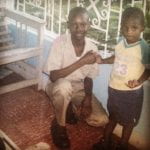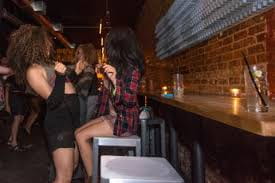Currently, I am enrolled at Georgia State University as an interdisciplinary studies major with a concentration in Biomedical Science and Engineering. This is my first year in college, and as a college student, the scenery around me is ever changing depending on the time of day. As opposed to the more stark, college-oriented
spaces in my current life, I prefer something more colorful and cultural such as a restaurant. In this case, my space of choice was a carribean restaurant, in which people of my cultural background came together to congregate and have a good time, not more than an 8 minute walk from my dorm. Choosing this space was relatively easy, as I am always eager to go out of my comfort zone and visit new environments I haven’t had the chance to immerse myself in before . My primary reason for going was to focus on the content of this analysis, but ultimately, my experiences were good enough to warrant me visiting again sometime, despite a noticeable iniquity being present.
From the moment entering the establishment, It was almost like two worlds collided, with the colorfully painted floors and the polished wooden countertops clashing with the concrete and metal atmosphere of the outside. One could almost describe it like stepping into another dimension, one away from the urban life and high paced activity, transitioning into a setting that would mimic an island, with relaxed people and cultural music. The vibrant wall painting emanated the cultural background of the establishment, completely independent of the urban way of life on the outside, and people who once treated each other like total strangers outside actually interacted with each other and took the time to “slow down” to engage in conversation. Come time for the dance floor to open up, new guests converged their way in like a gust of wind and with a swagger of bliss.
On the scene of the dance floor, there were different huddles of guests mingling within their clique, but the rhythms in the beats were so contagious that they seemed to move in synchrony with each other. Gone was the typical boisterous energy of more “typical parties”, and present was a plethora of social interaction and interconnective conversation in every direction. The music guided the movement of the crowd in a near autonomous fashion, with each beat working the crowd as if it had a mind of its own. The genre of music being played soon took a sharp change of pace as what were once optimistic lyrics about dancing and romancing delved into a hate filled extravaganza. Homophobic slurs were being casually thrown about throughout the song and the partygoers were swaying from side as if it wasn’t any of their business to stop and listen.
The fact that people were so indifferent to the context of the music was quite almost out of place, and some even went on to chant some of the lyrics. In the wider setting of Atlanta, homophobic music would not gel with several niches of people, but despite all of the pride marches and movements in this city, it is clear that there are still places that find no problem with playing hate filled homophobic music. It was very clear that the DJs were aware of the content of this music, but made a rushed attempt at a discretion warning before each “questionable” song as a way to justify that their intentions were not malicious, despite sometimes playing a few of these types of songs in a follow up, back to back fashion.
On a closing note, the problem of homophobia within popular culture, namely music, is still an ongoing issue despite some groups pretending that playing it aloud is a harmless practice, when in reality it comes at the expense of the already oppressed individuals in the LGBT community. The fact that this is going on not to far away in the city that has been the host of marches and festivals promoting gay pride makes this predicament all the more damning in terms of severity, while the people promoting it beleive that a simple discretion warning or apology is more than sufficient enough to cleanse their involvement in such a hateful expression. Lyrics of homophobic expression are not only confined to dancehall music, but multiple examples of it can be found in modern mainstream hip-hop songs from various popular artists, but are often overlooked in the way of criticizing other things such as the objectification of women. Homophobia in our music and popular culture is a very real problem that cannot be ignored any longer in the light of a more diverse, accepting society in this day and age, and it is the responsibility of the listening audiences in our society to pay closer attention to ensure that progress to change this is being made.


